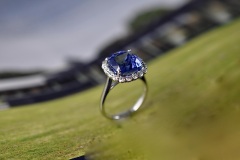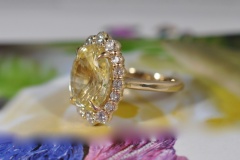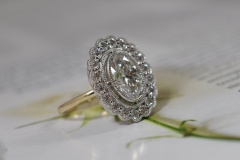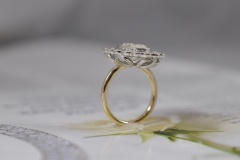Boston Diamond Studio, you now have access to the most beautiful diamonds in the Boston Metro area! This includes most any shape, size, color and clarity, from the most popular to the most uncommon. The experts at Boston Diamond Studio are able to offer you the most expertly cut diamonds in the world today. Our showcases feature a beautiful collection of finished rings and diamond jewelry to choose from. You may also request to view a selection of loose stones, out of the setting, meeting your specific criteria. With these diamonds you may design your own ring with our other staff members.
Boston Diamond Studio’s customer service is unmatched. The custom designed rings are unmatched, and the final results are unbelievable. Choose Boston Diamond Studio for your custom engagement ring or jewelry piece.
Get a Diamonds Free Quote!
Diamonds History
In unraveling the history and associations of diamonds, we also need to know the history of the words attached to diamond: did the words spoken by the Indians and Greeks signify the same things they do today, or something very different? “Diamond” comes from the Greek adamao, meaning “I tame” or “I subdue.” The adjective “adamas” was used to describe the hardest substance known, and eventually became synonymous with diamond.
The cultures that played a role in bringing the diamond into prominence are numerous. They are Greek, Indian, Old English, French, German, Hebrew, Latin, Arabic, Polish, Japanese, American, African, Korean, and Chinese.
Small numbers of diamonds began appearing in European regalia and jewelry in the 13th century, set as an accent point among pearls in splendid wrought gold. By the 16th century the diamond became larger and more prominent in response to the development of diamond faceting which enhances it brilliance and fire, and in the 17th and 18th centuries it presided as the last word in representing all that was wealth, prestige and power. An act of Saint Louis (Louis IX of France, 1214-70) that established a sumptuary law reserving diamonds for the king bespeaks of the rarity of them and the value conferred on them at that time. Within 100 years they appeared in royal jewelry of both men and women, then among the greater European aristocracy.
The earliest diamond-cutting industry is believed to have been in Venice, a trade capital, starting sometime after 1330. There is no recorded explanation for the European upsurge in the diamond’s popularity. Nevertheless, the huge import of diamonds during the 17th and 18th centuries is nothing sort of revolutionary. And the tradition of giving rings in the engagement and marriage ceremony as tokens of everlasting love has taken it into its present-day popularity.
This custom of exchanging wedding rings dates back as far as the comic Roman poet Plautus in the 2nd century BCE. Wedding rings were then valued because of interior inscriptions recording the marriage contracts signed in the presence of the Emperor’s image. The custom was continued and mostly Christianized by the 4th century by St. Augustine. Byzantine wedding rings are thick gold bands with round or oval bezels depicting the couple face to face, or receiving Christ’s blessing of their union.
Knowledge of diamond and its origin starts in India where it was first mined. The first known reference to it is a Sanskrit manuscript, the Arthsastra (“The Lesson of Profit”) by Kautiliya, a minister to Chandragupta of the Mauryan dynasty in northern India. And now over the centuries, the diamond continues to embody deep human expression of purity, strength, solarity and eternal love.




